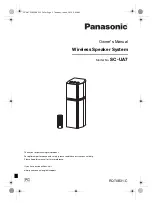
Partitioning
PIMA Electronic Systems
27
Appendix A
Troubleshooting Faults
The
FORCE
alarm system is constantly monitoring the status of the control panel, the detectors,
and the peripherals. When a fault occurs, this is what happens:
The fault LED
starts flashing
The buzzer starts sounding beeps. To silence it, press and hold the key.
The fault description is displayed onscreen
The fault is logged in the event memory
FORCE
reports the CMS (where relevant) and the contacts and activates peripherals (set by
the technician).
Some faults may indicate on burglary setup. Consider consulting with
your service technician.
Below is the description of common faults.
Fault
Description
AC Power
Power outage. As long as the backup battery has enough power,
the alarm system will function normally.
Low Battery
The backup battery is draining. Either there is a long power outage,
or the battery is exhausted and needs to be replaced.
An exhausted battery will not backup your
alarm system if AC power is lost!
Tamper 1-2,
Expander/Keypad
tamper
Tamper 1: the tamper switch of the box of the control panel is
at fault or open. Check that the box is closed.
Tamper 2, Expander Tamper, Keypad Tamper: the tamper
switch of one of the peripherals
12
is at fault or open.
Auxiliary Voltage
May indicate on burglary setup.
Telephone-DC, Dial
Tone (
FORCE Lite
:
unavailable)
The telephone line is disconnected or at fault. If other telephone
sets are connected to the
FORCE
, check them too.
Low DC
Internal power fault
Local/Zone/Outputs
Expander (various
faults)
Power or communication fault in a zone expander (some detectors)
or Outputs expander (some peripherals).
Keypad (various faults) Power or communication fault in a keypad
CMS
Communication fault with the monitoring station
Contact (various faults) Notification error
Modem (various faults) Communication fault
SIM (various faults)
SIM card fault (cellular add-on)
12
Depending on the setting of the technician.










































